Featured projects and papers
On this page, you will find the history of featured projects and papers in Climate AI Nordics. Each month, we feature one specific project or paper from members within Climate AI Nordics. Join us to recieve the newsletter!
Click here to see the newsletter archive.
Featured paper: Separating the Albedo-Reducing Effect of Snow Impurities Using Machine Learning
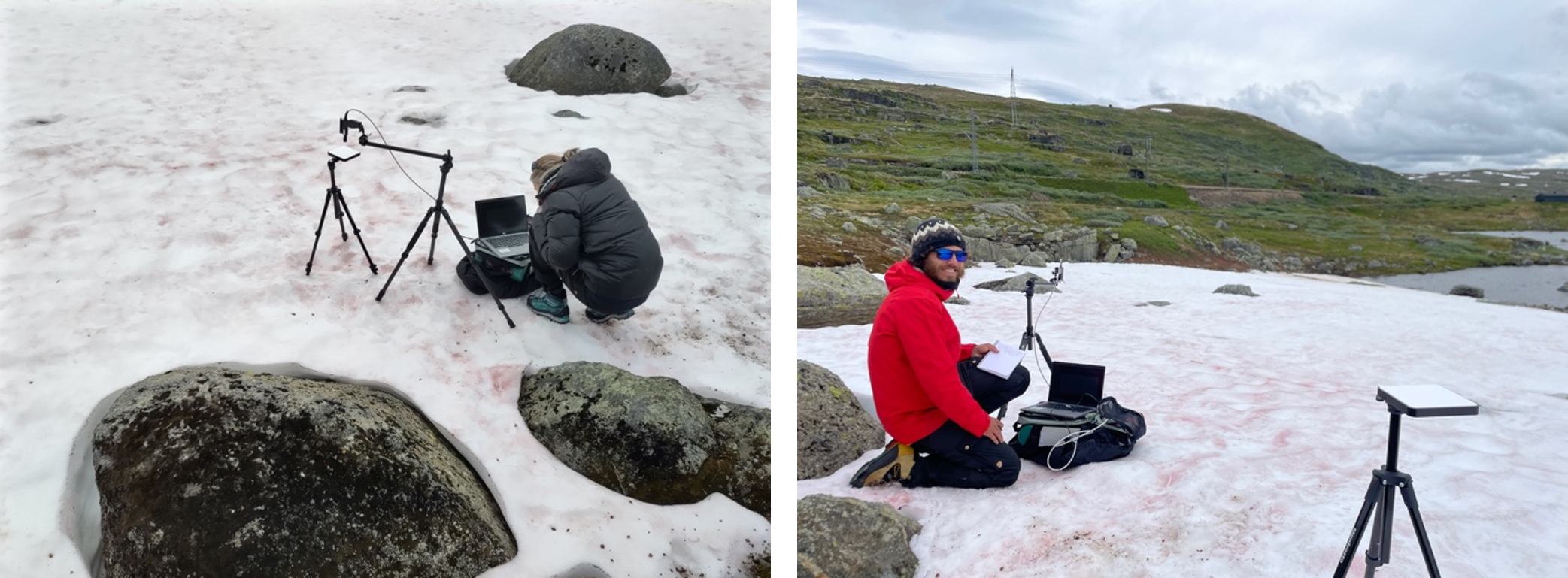
2025-11-25
This study presents an AI-driven inversion framework that uses a deep-learning emulator of a radiative transfer model to estimate snow albedo and quantify the impact of light-absorbing particles (LAPs) such as dust, black carbon, and algae. Trained on 5.8 million simulations, the method accelerates computations by 30× while maintaining accuracy, enabling large-scale mapping from drone or satellite data. Applied to field observations, it revealed strong but variable LAP effects on albedo and complex interactions between multiple impurities, offering a powerful tool for improving melt forecasts and climate projections.
Featured paper: Continuous urban change detection from satellite image time series with temporal feature refinement and multitask integration
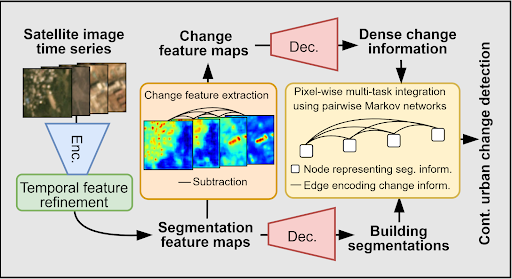
2025-10-29
This paper presents a method to continuously detect urban changes in high-resolution satellite image time series (SITS). Traditional urban change detection models often rely on bi-temporal image pairs acquired multiple years apart, limiting their ability to capture gradual, ongoing urbanization processes. The paper introduces a deep learning framework, including two novel modules to enhance segmentation feature maps extracted from SITS and integrate multi-task model outputs (i.e., building segmentations and dense change information). The paper’s findings show the limitations of bi-temporal change detection methods, as they cannot exploit multitemporal information in SITS. In contrast, their continuous urban change detection method achieves accurate urbanization monitoring results even at short time intervals.
Featured paper: Bayesian optimisation against climate change: applications and benchmarks
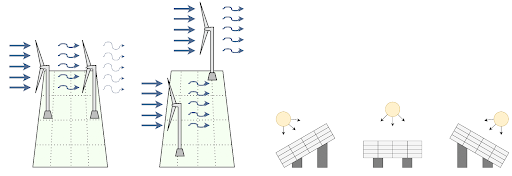
2025-08-25
The featured paper this month shows how Bayesian optimisation can support climate change mitigation by tackling optimisation problems in renewable energy and environmental monitoring. This includes a review on applications across four main use cases—material discovery, wind farm layouts, optimal renewable control, and environmental monitoring, and the proposal of benchmark problems to guide future research. The work is connected to ongoing projects at Climate AI Nordics, such as efforts to design safer solar panel materials and improve air pollution monitoring.
Featured paper: Accurate modeling of the potential energy surface of atmospheric molecular clusters boosted by neural networks
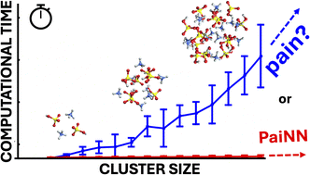
2025-06-25
This paper explores the potential for using neural networks to model atmospheric particle formation. The neural network-based model, tasked here to predict cluster binding energies, achieved the target chemical accuracy of less than 1 kcal/mol, although kernel ridge regression had a slightly lower error. Training was over an order of magnitude faster with the neural network compared to kernel ridge regression.
Featured paper: Severe decline in large farmland trees in India over the past decade
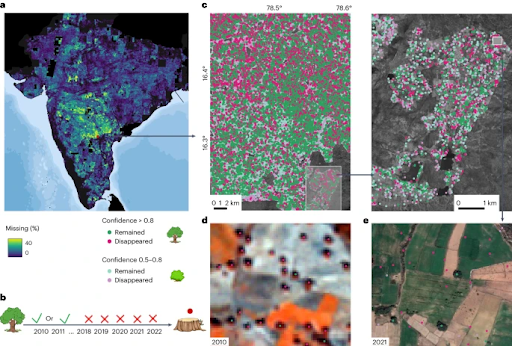
2025-05-27
This study investigates changes in agroforestry tree cover across India between 2010 and 2022 using high-resolution satellite imagery (RapidEye and PlanetScope) and extensive tree label datasets. The researchers applied deep learning techniques from object counting, using heatmap-based models that transformed discrete tree labels into continuous Gaussian representations for improved detection. Their findings reveal a significant decline in large farmland trees, with up to 11% loss nationally and as high as 50% in certain hotspot areas. From 2018 to 2022 alone, over 5 million trees were lost, reflecting a rapid transformation in India’s agricultural landscapes. Interviews with farmers linked this decline to shifts in cultivation practices, particularly the intensification of cropping systems.
Featured Project: Acoustic Monitoring of Guillemot Life at Stora Karlsö

2025-04-30
The AukLab project on Stora Karlsö enhances its AI-driven monitoring of Common Guillemots by adding continuous acoustic recording to its existing camera surveillance. A new system using synchronized Raspberry Pi units captures and analyzes guillemot vocalizations, integrating this audio data with visual and thermal information. Researchers aim to use machine learning on this combined dataset to gain deeper insights into social interactions, parental care, environmental responses, and potentially even detect fish arrivals acoustically. This addition represents a significant step towards creating a comprehensive digital representation of the guillemot colony for broader research access.
Featured Paper: Efficiency is Not Enough: A Critical Perspective of Environmentally Sustainable AI
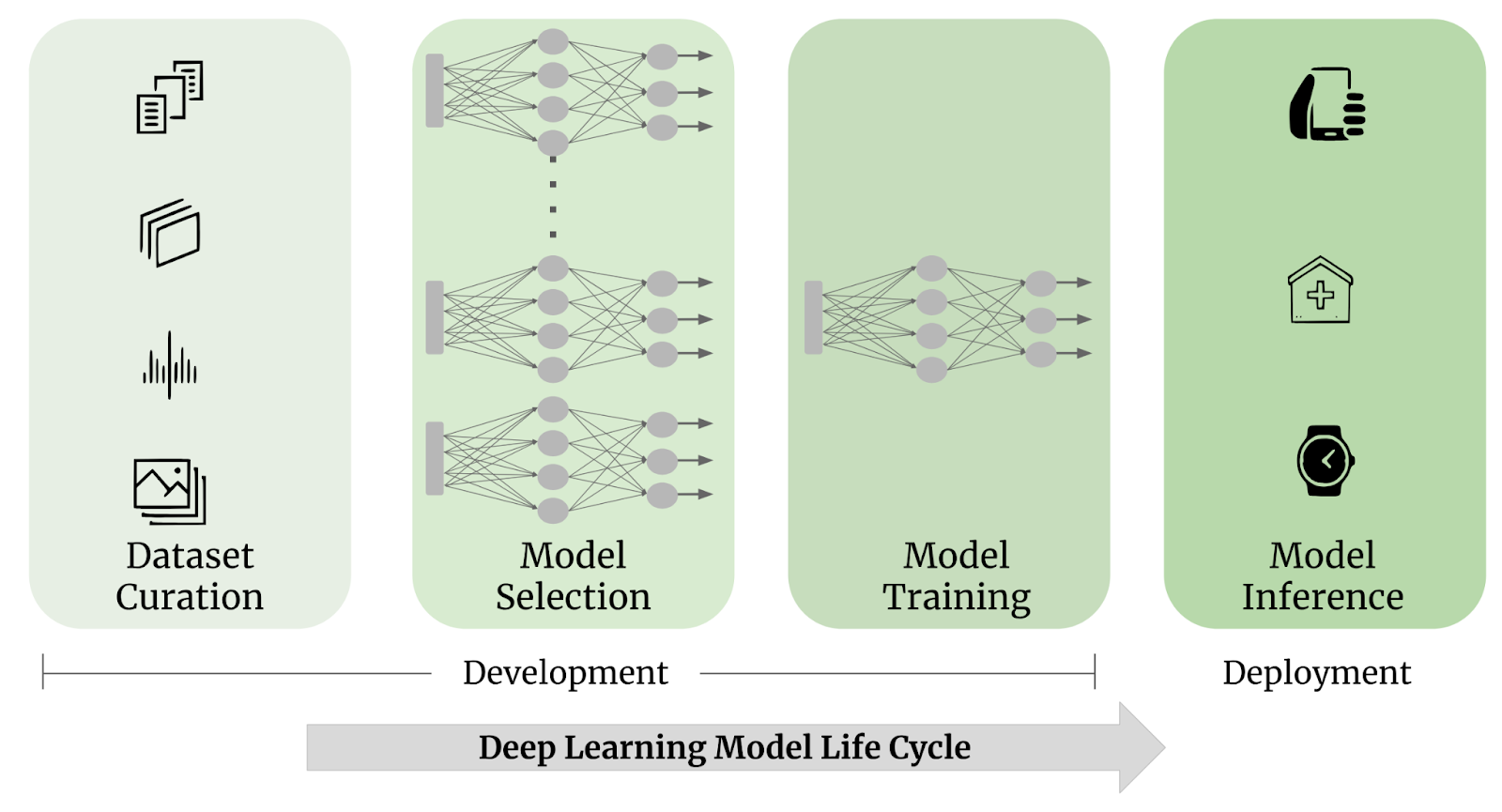
2025-03-27
This perspective paper discusses several reasons why it is crucial to look at the impact of machine learning (ML) using systems thinking, i.e. across the entire life cycle of models, from development to deployment.
Featured Project: AI-based seabird monitoring at Stora Karlsö, Sweden
2025-02-28
Read about an exciting project involving both artificial intelligence and an artificial rock shelf!
Featured Paper: Deep learning-enhanced detection of road culverts in high-resolution digital elevation models: Improving stream network accuracy in Sweden

2025-01-27
The new Climate AI Nordics Featured Paper is “Deep learning-enhanced detection of road culverts in high-resolution digital elevation models: Improving stream network accuracy in Sweden” by William Lidberg. In this work, Lidberg combines LiDAR data and aerial imagery with deep learning to detect 87 % of all road culverts in Sweden. These culverts are in turn used to increase the accuracy of maps featuring small watercourses.
Featured Paper: ONEKANA: Modelling Thermal Inequalities in African Cities
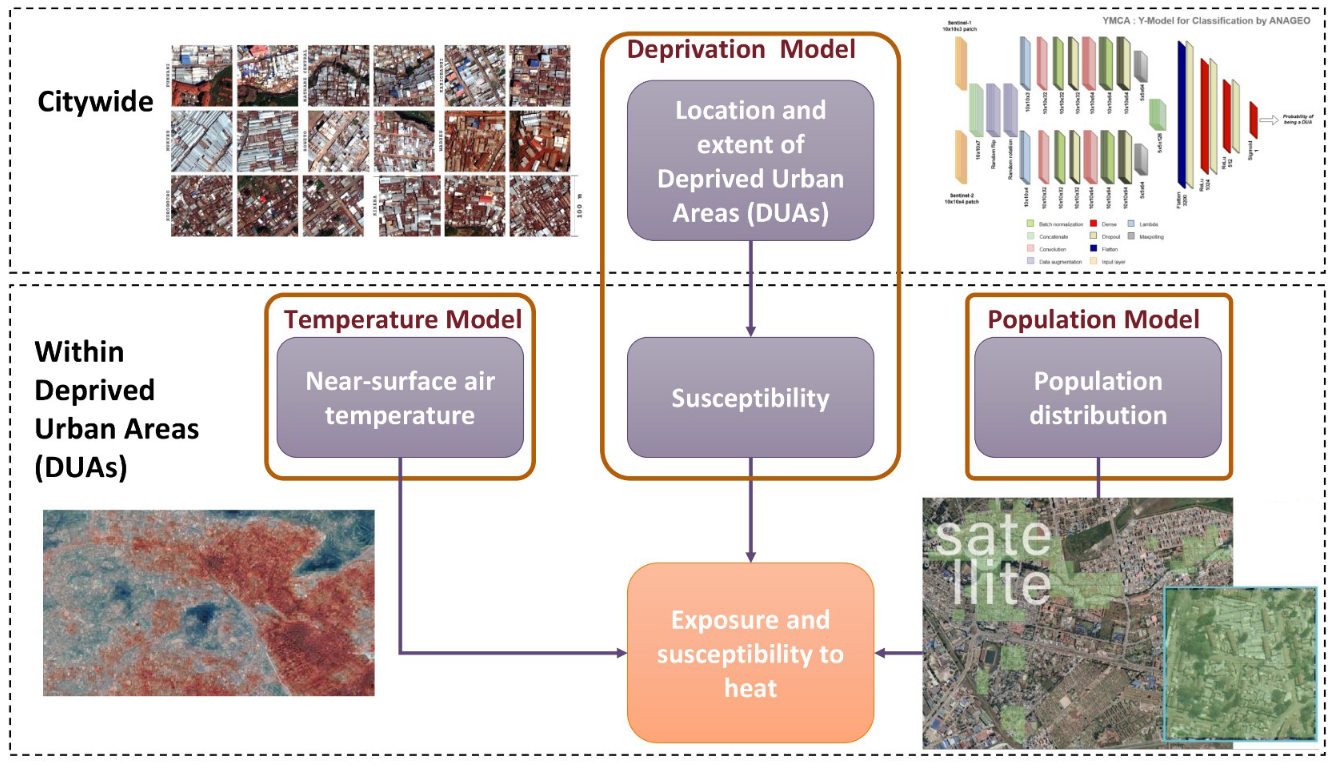
2024-12-03
The new Climate AI Nordics Featured Paper is “ONEKANA: Modelling Thermal Inequalities in African Cities” by Sabine Vanhuysse and colleagues. This research addresses the pressing issue of thermal disparities in rapidly urbanizing African cities, where vulnerable populations are disproportionately affected by extreme heat due to environmental and socioeconomic factors.
Featured Preprint: Continuous Ensemble Weather Forecasting with Diffusion Models
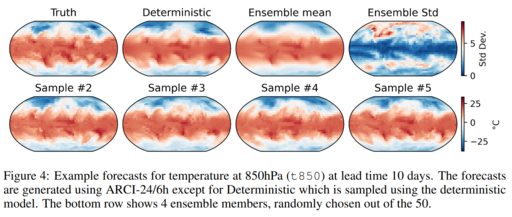
2024-11-22
In Featured Preprints, preprints from affiliated researchers are summarized and featured at Climate AI Nordics. This one features "Continuous Ensemble Weather Forecasting with Diffusion Models", from Martin Andrae, Tomas Landelius, Joel Oskarsson, and Fredrik Lindsten.
